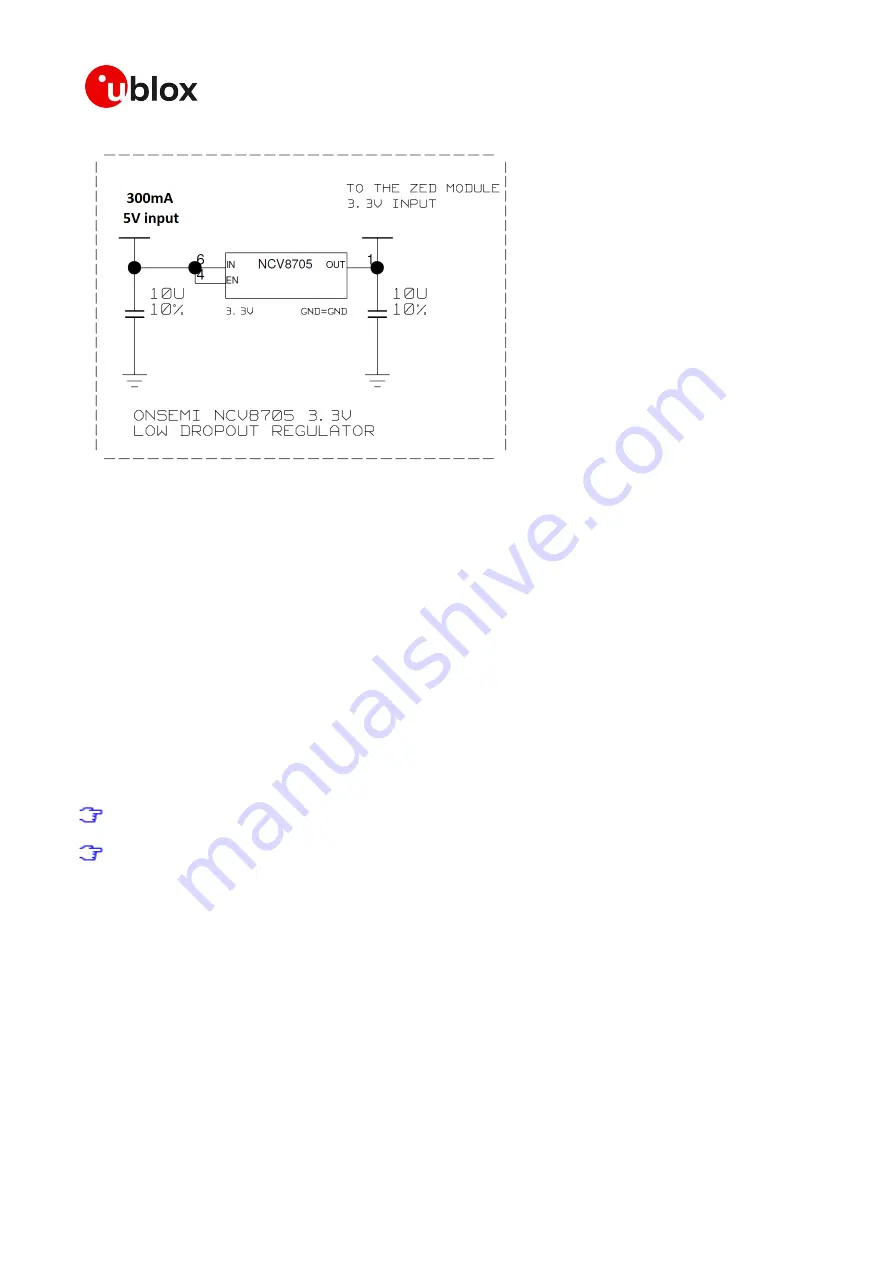
ZED-F9P - Integration Manual
UBX-18010802 - R01
2 Hardware description
Page 30 of 64
Objective Specification - Confidential
Figure 29: ZED-F9P power supply
2.3 Interfaces
A number of interfaces are available in the ZED-F9P high precision receiver (UART and SPI, DDC),
but not all supported by firmware for data communication. The firmware uses these interfaces
according to their respective protocol specifications. For specification of the protocols please see
the u-blox ZED-F9P Interface Description [
2.3.1 UART interfaces
UART1
The ZED-F9P high precision receiver makes use of a UART interface, which can be used for
communication with a host. It supports configurable baud rates.
UART2
There is a second UART interface UART2 that has no Host interface capability (no UBX or NMEA
messages). This interface is primarily intended for interfacing to a satellite correction receiver.
With firmware version 1.00B03 it is not possible to use the UART2 as an RTCM interface.
With firmware version 1.00B03 the default baud rate is 38400 baud and it is not
recommended to run at a baud rate lower than this with the default NMEA messages.
2.3.2 SPI interface
The ZED-F9P high precision receiver has a SPI slave interface that can be selected by setting D_SEL
= 0. The SPI slave interface is shared with UART1. The SPI pins available are: SPI_MISO (TXD),
SPI_MOSI (RXD), SPI_CS_N, SPI_CLK. The SPI interface is designed to allow communication to a
host CPU. The interface can be operated in slave mode only. The maximum transfer rate using SPI
is 125kB/s and the maximum SPI clock frequency is 5.5 MHz.
2.3.3 D_SEL interface
The ZED-F9P high precision receiver has a D_SEL pin that allows the selection between UART1 and
SPI interface at power On. By default with D_SEL not connected or pulled up, the ZED-F9P is using
UART1 interface and DDC and there is no SPI interface.
















































